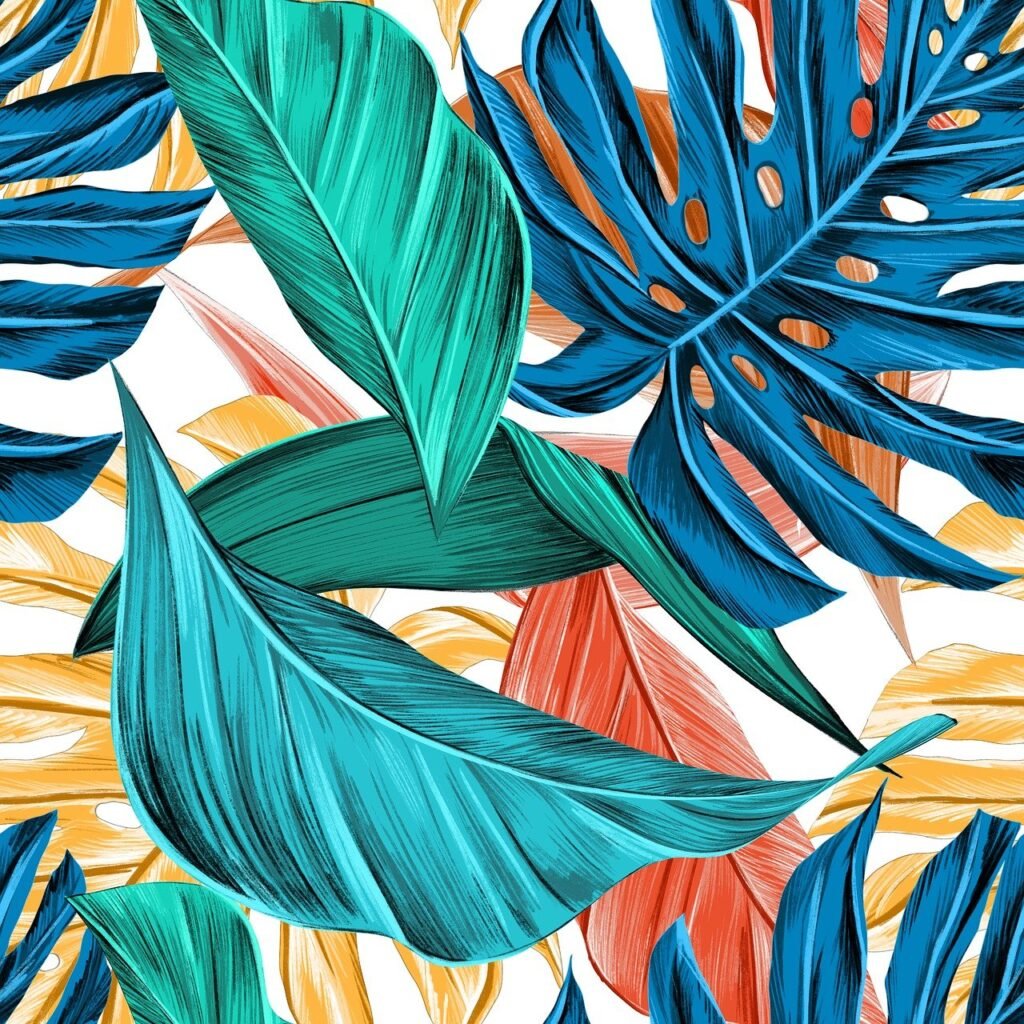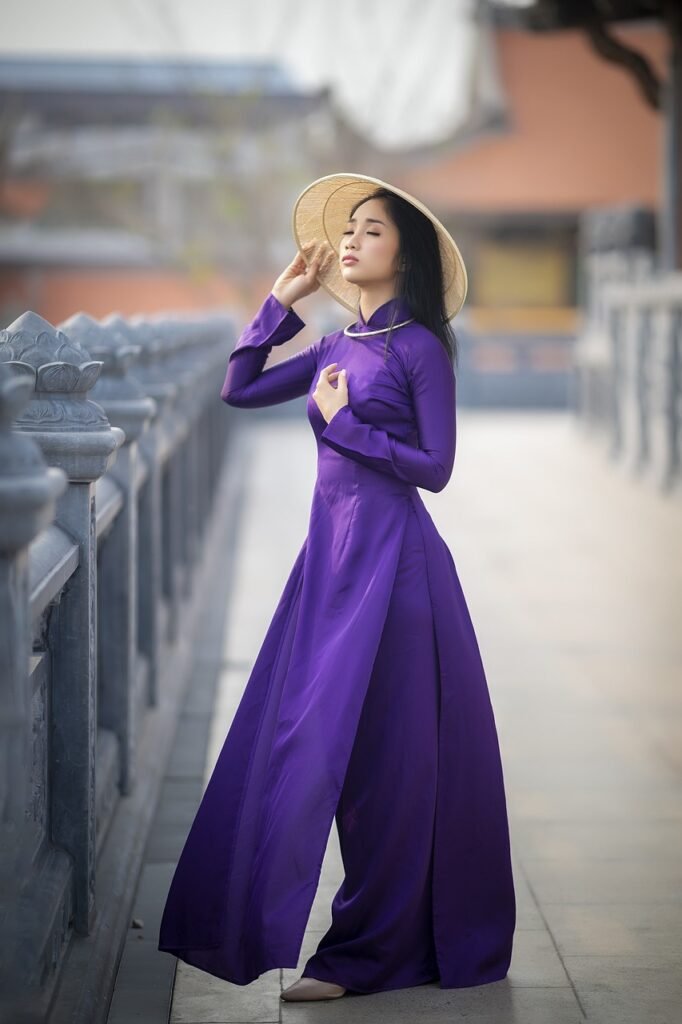In the world of design, there is a captivating fusion happening between traditional craftsmanship and modern style. This intriguing blend brings together the beauty and authenticity of age-old techniques with the sleek and contemporary aesthetics of the present. By seamlessly combining the best of both worlds, designers are able to create unique and captivating pieces that showcase the rich history of craftsmanship while embracing the innovation and creativity of the modern era. In this article, we will explore the seamless blending of traditional craftsmanship and modern style, uncovering the enchanting allure of this fusion and discovering how it is shaping the world of design. So, get ready to be inspired as we delve into the mesmerizing world where traditional meets modern.
The History of Traditional Craftsmanship

This image is property of pixabay.com.
Origins and development
Traditional craftsmanship has a rich history that spans across cultures and time periods. It originated as a means of creating functional and beautiful objects, using techniques that have been passed down through generations. From ancient civilizations to medieval guilds, craftsmanship played a vital role in society.
In the earliest days, craftsmen would use natural materials found in their surroundings to create useful items such as tools, pottery, and textiles. As communities began to develop and trade expanded, craftsmanship evolved to include more complex techniques and a wider range of materials.
Techniques and materials
Traditional craftsmanship encompasses a wide array of techniques and materials, each unique to its respective culture and region. From woodworking and metalworking to weaving and ceramics, craftsmen have honed their skills using specialized tools and methods.
For example, in Japan, traditional craftsmanship includes techniques like woodblock printing, pottery-making, and weaving delicate textiles like silk and kimono fabrics. These techniques require years of training and practice to master, ensuring the preservation of these time-honored skills.
The materials used in traditional craftsmanship are often sourced locally, emphasizing sustainability and the connection to the land. Natural fibers, such as cotton, wool, and linen, are commonly used in textiles, while wood, stone, and metals are utilized in furniture and decorative arts.
Role in culture and society
Traditional craftsmanship is deeply intertwined with the culture and identity of a society. It reflects the values, beliefs, and aesthetic preferences of a particular community. Craftsmanship serves as a way to preserve cultural heritage, stories, and traditions, ensuring they are passed down to future generations.
In many societies, craftsmen hold a revered status, often celebrated for their skill and contribution to society. They are held in high regard for their ability to create unique and handcrafted objects that carry a sense of authenticity and history.
Through the creation of traditional crafts, communities are strengthened and connected to their roots. Craftsmanship serves as a cultural marker, celebrating diversity and maintaining a sense of pride in heritage.
Evolution of Modern Style
Influences and trends
Modern style in design and aesthetics has evolved over time, drawing influence from various sources. From the simplicity of mid-century modernism to the bold experimentation of postmodernism, each era has contributed to the evolution of modern style.
Influences can range from art movements and architectural styles to technological advancements and societal shifts. For instance, the Bauhaus movement of the early 20th century embraced the principles of functionality and minimalism, shaping the foundation of modern design.
Trends in modern style often reflect the needs and desires of contemporary society. From the desire for sustainability and eco-consciousness to the emphasis on minimalism and clean lines, modern style continues to adapt to the changing preferences of consumers.
Key features and characteristics
Modern style is characterized by its simplicity, clean lines, and focus on functionality. It embraces minimalism and often reduces design elements to their essential forms. Neutral color palettes, such as whites, grays, and earth tones, are commonly used to create a sense of calm and unity.
In addition to minimalism, modern style often incorporates innovative materials and technologies. The use of glass, steel, and concrete in architecture and furniture design exemplifies the integration of new materials into modern aesthetics.
Impact on design and aesthetics
The evolution of modern style has had a profound impact on design and aesthetics. It has shifted the focus from ornate and elaborate designs to sleek and streamlined forms. Modern style has also brought forth a sense of experimentation and innovation in design, challenging traditional notions of what is considered beautiful or functional.
Modern aesthetics can be seen in various industries, from fashion and interior design to product development and graphic design. Its influence is pervasive, influencing the way we interact with and perceive aesthetics in our everyday lives.
Embracing the Fusion
Acknowledging the past
As society continues to embrace modern style, it is crucial to acknowledge the importance of traditional craftsmanship. Recognizing the history and cultural significance of traditional crafts allows us to appreciate the skills and techniques that have been passed down through generations.
By acknowledging the past, we honor and respect the artisans who have dedicated their lives to preserving traditional craftsmanship. This recognition provides a foundation for the fusion of traditional craftsmanship and modern style, allowing for a harmonious integration of the old and the new.
Creating a balance
The fusion of traditional craftsmanship and modern style requires a delicate balance. It entails blending the techniques, materials, and aesthetics of traditional crafts with the functional and minimalist principles of modern design.
Creating this balance involves understanding the core principles of each tradition and finding common ground. It requires designers and craftsmen to collaborate and communicate, ensuring that the integrity of both traditions is maintained.
Combining old and new techniques
In order to create a seamless fusion between traditional craftsmanship and modern style, it is essential to combine old and new techniques. This involves taking traditional craftsmanship as a foundation and incorporating modern techniques and technologies to enhance and evolve the craft.
For example, a skilled woodworker may combine traditional joinery with contemporary machinery to create furniture that seamlessly blends traditional craftsmanship with modern design aesthetics. By combining techniques, craftsmen can create unique and innovative pieces that honor their heritage while embracing the demands of the modern world.
Applying Traditional Craftsmanship to Modern Style

This image is property of pixabay.com.
Adapting traditional techniques
Applying traditional craftsmanship to modern style requires adapting techniques to meet contemporary demands. This could involve modifying traditional tools, using alternative materials, or incorporating new finishes and styles.
For example, an artisan who specializes in ceramics may experiment with new firing techniques and glazes, creating contemporary pieces that retain the essence of traditional craftsmanship while appealing to modern aesthetics.
Incorporating handmade elements
In the age of mass production, handmade elements add a personal and authentic touch to modern designs. The imperfections and unique characteristics of handmade objects bring a sense of warmth and humanity, contrasting with the uniformity of mass-produced items.
By incorporating handmade elements into modern style, designers can create truly one-of-a-kind pieces that connect individuals to the craftsmanship and cultural heritage behind the object. This not only adds value to the product but also enriches the consumer’s experience.
Preserving cultural heritage
Applying traditional craftsmanship to modern style provides an opportunity to preserve and promote cultural heritage. By incorporating elements from diverse traditional crafts, designers can create products that celebrate the beauty and uniqueness of various cultural traditions.
Preserving cultural heritage through modern design ensures that traditional crafts are revitalized and maintained as living traditions. It fosters an appreciation for the skills, techniques, and stories woven into the fabric of these crafts, ensuring their survival for future generations.
Inspiration from Traditional Craftsmanship
Exploring different traditions
Drawing inspiration from traditional craftsmanship involves exploring different cultural traditions. By studying the techniques, materials, and motifs of diverse traditions, designers can gain a deeper understanding of the rich heritage that traditional crafts embody.
For instance, an accessory designer may draw inspiration from the intricate beadwork of indigenous tribes, incorporating similar patterns and techniques into modern jewelry designs. This not only adds a unique and culturally significant element to the design but also provides an opportunity to honor and celebrate the craftsmanship of indigenous communities.
Learning from indigenous cultures
Indigenous cultures around the world possess a wealth of knowledge and skills when it comes to traditional craftsmanship. Learning from these cultures involves engaging with artisans and communities to gain insights into their unique techniques, materials, and cultural significance.
By partnering with indigenous artisans, designers can collaborate on projects that showcase the fusion of traditional craftsmanship and modern style. This not only provides economic opportunities for indigenous communities but also fosters cross-cultural exchange and mutual understanding.
Infusing cultural motifs
Infusing cultural motifs into modern designs can be a powerful way to celebrate and promote traditional craftsmanship. By incorporating elements such as patterns, symbols, and colors that have cultural significance, designers can create products that tell stories and evoke a sense of cultural identity.
For example, a textile designer may take inspiration from traditional indigenous textiles and reinterpret them into contemporary patterns for fashion or home decor. This infusion of cultural motifs adds depth and meaning to the design, providing a bridge between past and present.
Integrating Modern Style into Traditional Crafts
Experimenting with contemporary materials
Integrating modern style into traditional crafts often involves experimenting with contemporary materials. By blending traditional techniques with innovative materials, craftsmen can create unique and striking designs that appeal to modern sensibilities.
For instance, a traditional basket weaver may experiment with using recycled plastics or metal wires to create contemporary baskets that retain the essence of traditional craftsmanship while offering a fresh and modern twist.
Incorporating modern aesthetics
Traditional crafts can be enhanced and revitalized by incorporating modern aesthetics. By integrating contemporary design elements, such as sleek lines or bold colors, into traditional crafts, craftsmen can create pieces that cater to modern tastes while maintaining the authenticity of the craft.
For example, a ceramic artist may use traditional techniques to create pottery with modern and minimalist forms. By incorporating a contemporary aesthetic, the artist can attract a wider audience who appreciates both the heritage and the design.

This image is property of pixabay.com.
Attracting new audiences
Integrating modern style into traditional crafts opens up opportunities to attract new audiences. By bridging the gap between tradition and modernity, craftsmen can appeal to consumers who value both the craftsmanship and the contemporary aesthetic.
By showcasing the fusion of traditional craftsmanship and modern style in exhibitions and collaborations, craftsmen can reach a broader audience who may not have been initially drawn to traditional crafts. This exposure can generate interest, appreciation, and support for traditional craftsmanship in a modern context.
Reinterpreting Traditional Crafts for the Modern World
Reviving endangered crafts
In the face of globalization and changing consumer preferences, many traditional crafts are at risk of being forgotten or abandoned. However, by reinterpreting traditional crafts for the modern world, craftsmen can breathe new life into endangered crafts.
For example, traditional embroidery techniques may be adapted to create contemporary clothing designs, attracting a younger generation of consumers who appreciate the unique blend of tradition and modernity. This reinterpretation not only preserves the craft but also allows it to continue evolving within a modern context.
Promoting sustainable practices
Incorporating traditional craftsmanship into modern style provides an opportunity to promote sustainable practices. Traditional crafts often prioritize the use of natural and locally sourced materials, reducing the carbon footprint and supporting local economies.
By highlighting the sustainable aspects of traditional crafts, designers and craftsmen can raise awareness about the ecological impact of mass production and the importance of preserving traditional skills. This promotes a more conscious approach to consumption and production, benefiting both the environment and local communities.
Modernizing traditional designs
Reinterpreting traditional crafts for the modern world involves modernizing traditional designs. This may involve adapting patterns, incorporating contemporary colors, or experimenting with new forms and functions.
By combining traditional craftsmanship with modern design aesthetics, craftsmen can create products that resonate with contemporary consumers. This fusion of traditional and modern elements ensures the relevance and continuity of traditional crafts in a rapidly changing world.
Challenges and Opportunities in the Fusion
Balancing tradition and innovation
One of the challenges in the fusion of traditional craftsmanship and modern style lies in striking a balance between tradition and innovation. Maintaining the authenticity and integrity of traditional crafts while incorporating modern design elements requires careful consideration and collaboration.
Craftsmen and designers must navigate the tension between honoring tradition and embracing progress. This delicate balance ensures that traditional crafts remain relevant and adaptable to the changing demands and tastes of modern consumers.
Preserving authenticity
Preserving the authenticity of traditional craftsmanship while integrating it into modern style is crucial. Maintaining the unique characteristics and quality of traditional crafts ensures that they retain their value and appeal in a market saturated with mass-produced goods.
By upholding the standards and techniques of traditional crafts, craftsmen and designers can differentiate their work from imitation or diluted versions. This commitment to authenticity fosters an appreciation for the cultural and historical significance of traditional crafts and sets them apart in a world driven by rapid consumption.
Meeting market demands
The fusion of traditional craftsmanship and modern style presents opportunities and challenges in meeting the demands of the market. Consumers are increasingly seeking unique and meaningful products, and there is growing interest in traditional craftsmanship.
Craftsmen and designers must find ways to balance market demands with the time-intensive and skillful nature of traditional crafts. Collaboration, innovation, and strategic marketing can help bring the fusion of traditional craftsmanship and modern style to a wider audience, ensuring the sustainability and viability of these crafts.
Case Studies: Successful Fusion of Craftsmanship and Modern Style
Luxury brands embracing traditional techniques
Luxury brands have successfully embraced the fusion of traditional craftsmanship and modern style. These brands often collaborate with skilled artisans to create limited-edition pieces that showcase the meticulous techniques and heritage of traditional crafts.
For example, luxury fashion houses may collaborate with master embroiderers or weavers to create intricately crafted garments that combine traditional techniques with contemporary silhouettes. This fusion of tradition and modernity appeals to discerning customers who value craftsmanship and exclusivity.
Artisans collaborating with designers
Collaboration between artisans and designers has been instrumental in the successful fusion of traditional craftsmanship and modern style. By combining the expertise of craftsmen with the innovative vision of designers, unique and compelling products can be created.
For instance, a ceramic artist may collaborate with a furniture designer to create a collection that incorporates ceramic elements into modern furniture. This collaboration allows both the artist and the designer to explore new possibilities and push the boundaries of their respective crafts.
Design collectives promoting hybrid creations
Design collectives dedicated to promoting the fusion of traditional craftsmanship and modern style have emerged as powerful platforms for collaboration and innovation. These collectives bring together designers, craftsmen, and artists from diverse backgrounds, fostering a shared creative space for experimentation and exploration.
By pooling resources and expertise, design collectives can support and showcase the fusion of traditional craftsmanship and modern style through exhibitions, workshops, and collaborative projects. This collective effort not only promotes cross-disciplinary collaboration but also raises awareness and appreciation for the fusion of tradition and modernity.
The Future of Craftsmanship and Design
Adapting to changing consumer preferences
As consumer preferences continue to evolve, the future of craftsmanship and design lies in adapting to these changes. Craftsmen and designers must stay attuned to shifting trends and demands, finding ways to integrate traditional craftsmanship into modern design in a way that resonates with contemporary consumers.
The future of craftsmanship will likely involve a balance between tradition and innovation, as artisans and designers find new and exciting ways to express their craft while meeting the evolving needs and desires of consumers.
Embracing technology advancements
Technology advancements present opportunities for craftsmanship and design. While traditional craftsmanship often emphasizes handmade techniques and processes, integrating technology can enhance efficiency, precision, and innovation.
For example, digital fabrication techniques, such as 3D printing or laser cutting, can be incorporated into traditional crafts, expanding the possibilities for design and production. By embracing technology advancements, craftsmen can push the boundaries of traditional craftsmanship and create novel and exciting pieces.
Revitalizing traditional crafts
The fusion of traditional craftsmanship and modern style offers a path to revitalize and rejuvenate traditional crafts. By infusing contemporary elements into traditional designs, craftsmen can attract new audiences, bringing renewed interest and appreciation to these age-old practices.
The future of craftsmanship will involve a conscious effort to preserve and promote traditional crafts, ensuring their relevance, and inspiring future generations to carry on these cherished traditions. Through innovation, education, and collaboration, traditional crafts have the potential to thrive and evolve within a modern context.
In conclusion, the fusion of traditional craftsmanship and modern style offers a unique and compelling way to celebrate heritage, embrace innovation, and create meaningful and sustainable products. It is through the collaboration and appreciation of both traditions that we can ensure the preservation and evolution of traditional crafts in the modern world. Craftsmanship and design are not mutually exclusive but rather complementary forces that can shape the future of creativity and cultural preservation.
